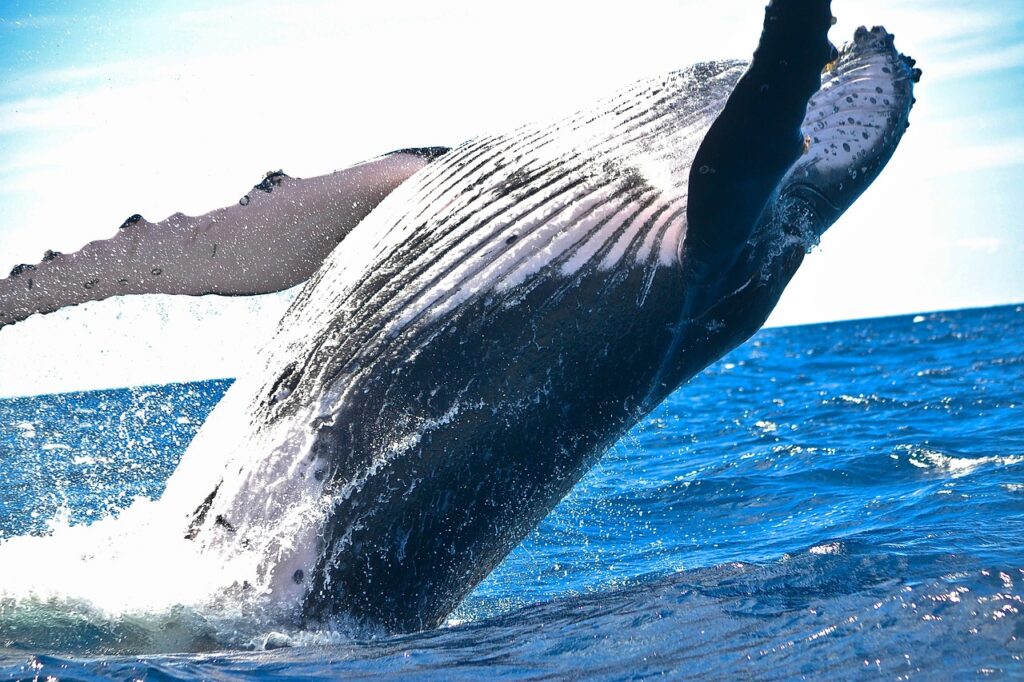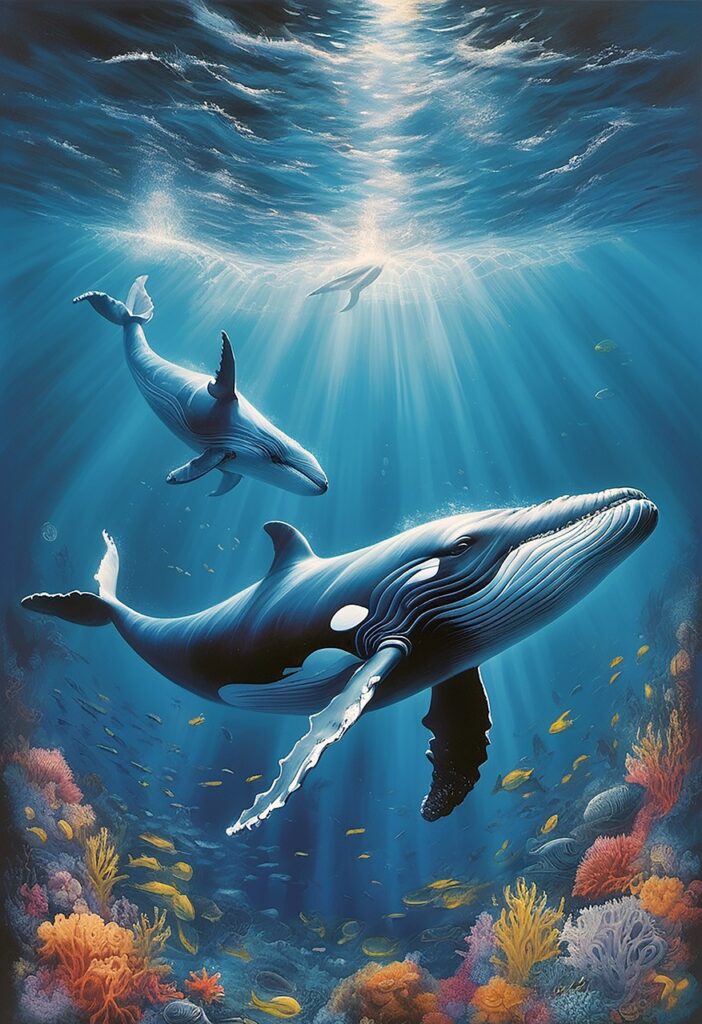
Blue Whale Size Comparison
The blue whale is recognized as the largest animal to have ever existed on Earth. It surpasses not only all other whales, but every living and extinct animal, including the largest dinosaur. In this article, we will see how big the blue whale is by comparing it to different objects, animals and even buildings. We will also touch on his height, weight and other interesting aspects, all presented in a way that is easy to understand and informative.
The Immense Size of the Blue Whale
The blue whale (Balaenoptera musculus) is truly a giant. An average adult blue whale can reach a length of up to 100 feet (30 m) and weigh up to 200 tons (about 180,000 kg). To put that in perspective, that’s about the weight of 33 elephants or 2,500 humans! The sheer size of the blue whale makes it a wonder of the natural world.
Blue Whale vs. Other Whales
Of all the whale species, the blue whale is the largest. For example, the humpback whale, which is also quite large, reaches only 50 feet (15 m) in length and weighs up to 40 tons (36,000 kg). The sperm whale, known for its deep diving abilities, is slightly larger, growing up to 60 feet (18 m) and weighing about 45 tons (40,800 kg). However, none of these whales come close to the gigantic size of the blue whale.
Blue Whale Size Comparison | Blue Whale vs. Dinosaurs
When the blue whale is compared to the largest dinosaurs, it becomes clear how unusual this marine mammal is. Argentinosaurus, one of the largest known dinosaurs, was about 100 feet (30 m) long, comparable to the length of a blue whale. However, Argentinosaurus is estimated to have weighed only 100 tons (90,000 kg), making it half the weight of a blue whale. This comparison highlights that, by and large, the blue whale is unmatched.
Blue Whale Size Comparison | Blue Whale vs. Common Objects
To better visualize the size of a blue whale, let’s compare it to some everyday objects:
- School Buses: A standard school bus is about 45 feet (13.7 meters) long. A blue whale is more than twice the length of a school bus, with some reaching up to 100 feet. Imagine two school buses parked end to end—that’s roughly the length of a blue whale!
- Basketball Courts: A basketball court is about 94 feet (28.7 meters) long. A blue whale can be longer than a basketball court, with some exceeding the court’s length by several feet.
- Airplanes: The wingspan of a Boeing 737 is about 117 feet (35.7 meters). While the wingspan is slightly longer than the blue whale’s length, the whale’s body is still comparable to a large commercial airplane.
- Buildings: A typical 10-story building is about 100 feet (30 meters) tall. If a blue whale were to be placed vertically, it would be as tall as a 10-story building!
Let’s see how it compares to some other big animals.
1. Blue Whale vs. Elephant
Elephants are huge, but the blue whale is way bigger! A blue whale can be up to 100 feet long and weigh 200 tons. An elephant is about 13 feet tall and weighs only 6 tons. That means a blue whale is much bigger than an elephant!
2. Blue Whale vs. Shark
Great white sharks are big and scary, but next to a blue whale, they are small! A great white shark is around 20 feet long and weighs 2 tons. The blue whale is 5 times longer than a shark and way heavier!
3. Blue Whale vs. Giraffe
Giraffes are tall, but they don’t come close to the blue whale. A giraffe is about 18 feet tall, and even if you stack 5 giraffes, they wouldn’t be as long as one blue whale!
4. Blue Whale vs. Human
Humans are very small next to a blue whale. Most people are around 5 to 6 feet tall. A blue whale’s heart is as big as a car, and you could even fit inside its huge mouth!
5. Blue Whale vs. Dinosaur
Even the biggest dinosaurs were smaller than the blue whale. Some dinosaurs were 85 feet long, but the blue whale can still be longer at 100 feet!
Blue Whale Size Comparison | Blue Whale vs. Humans
Blue Whale Size Comparison – When we compare blue whales to humans, the difference is striking. An average adult is about 5.5 to 6 feet tall (1.7 to 1.8 m) and weighs about 150 to 200 pounds (68 to 90 kg). A blue whale is about 16 to 18 times longer than an average human and weighs about 1.3 million times more!

The Blue Whale’s Heart and Tongue
The blue whale is not only very large in length and weight, but also has very large limbs. A blue whale’s heart is about the size of a small car, weighing about 1,300 pounds (590 kg). Its tongue alone can weigh as much as an elephant—about 5,000 pounds (2,300 kg). These features are necessary to support the large size of the wheel.
The Blue Whale’s Diet
Despite its enormous size, the blue whale eats some of the smallest creatures in the ocean. During the lactation season, a blue whale can eat up to 4 tons (3,600 kg) of krill per day. This diet supports their incredible size and provides the energy needed for long migrations.
Blue Whale Migration and Lifespan
Blue whales are migratory animals, traveling thousands of miles each year between their feeding and breeding grounds. They can be found in oceans around the globe, from the Arctic to the Antarctic. Despite their size, blue whales are fast swimmers, capable of reaching speeds of up to 20 mph (32 km/h).
Blue whales have long lifespans, living up to 70-90 years in the wild. Some individuals have been known to live for over 100 years, making them one of the longest-living marine mammals.
Blue Whale Conservation Status
Unfortunately, blue whales are an endangered species. Their population was severely depleted during the 20th century due to commercial whaling. Although protected since the 1960s, the blue whale population is still recovering, and it is estimated that only 10,000 to 25,000 individuals remain in the wild today.
Conservation efforts are crucial to ensure that these magnificent creatures continue to thrive in the oceans. Protecting their habitats and reducing human-induced threats, such as ship strikes and entanglement in fishing gear, are essential steps in their recovery.
Conclusion
Blue Whale Size Comparison | The blue whale is a true giant, unmatched in size by any other animal, living or extinct. Its massive body, weighing up to 200 tons and stretching up to 100 feet, is a testament to the wonders of the natural world. By comparing the blue whale to various objects, animals and even buildings, we can better appreciate the sheer scale of this incredible creature.
As we continue to learn more about blue whales, it’s important to remember the role they play in the marine ecosystem and the efforts needed to protect them. These giants of the ocean are not just remarkable for their size, but also for their resilience and the awe they inspire in all who learn about them.
Final Thoughts
The blue whale is no more than the largest animal on Earth. It’s a reminder of the beauty and complexity of life in our oceans. By protecting and conserving these magnificent creatures, we ensure that future generations continue to marvel at the wonders of the natural world.

Blue Whale Size Comparison | FAQs About Blue Whales
1. How big is a blue whale compared to a human?
- A blue whale can grow up to 100 feet long, making it about 16 to 18 times longer than an average adult human. In terms of weight, a blue whale can weigh as much as 200 tons, which is roughly equivalent to the weight of 2,500 humans!
2. What is the largest part of a blue whale?
- The blue whale’s heart is the largest organ in its body, weighing around 1,300 pounds—about as much as a small car. Its tongue is also massive, weighing up to 5,000 pounds, equivalent to an adult elephant’s weight.
3. How much food does a blue whale eat in a day?
- During feeding season, a blue whale can consume up to 4 tons (3,600 kilograms) of krill daily. This massive intake is necessary to fuel its enormous body and maintain energy levels for migration.
4. How fast can a blue whale swim?
- Despite its size, the blue whale is a surprisingly fast swimmer. It can reach speeds of up to 20 miles per hour (32 kilometers per hour) when it needs to, though it typically cruises at a slower pace.
5. Are blue whales endangered?
- Yes, blue whales are currently listed as endangered. Their populations were severely reduced due to commercial whaling in the 20th century. Although whaling is now banned, threats like ship strikes and entanglement in fishing gear continue to pose risks to their recovery.